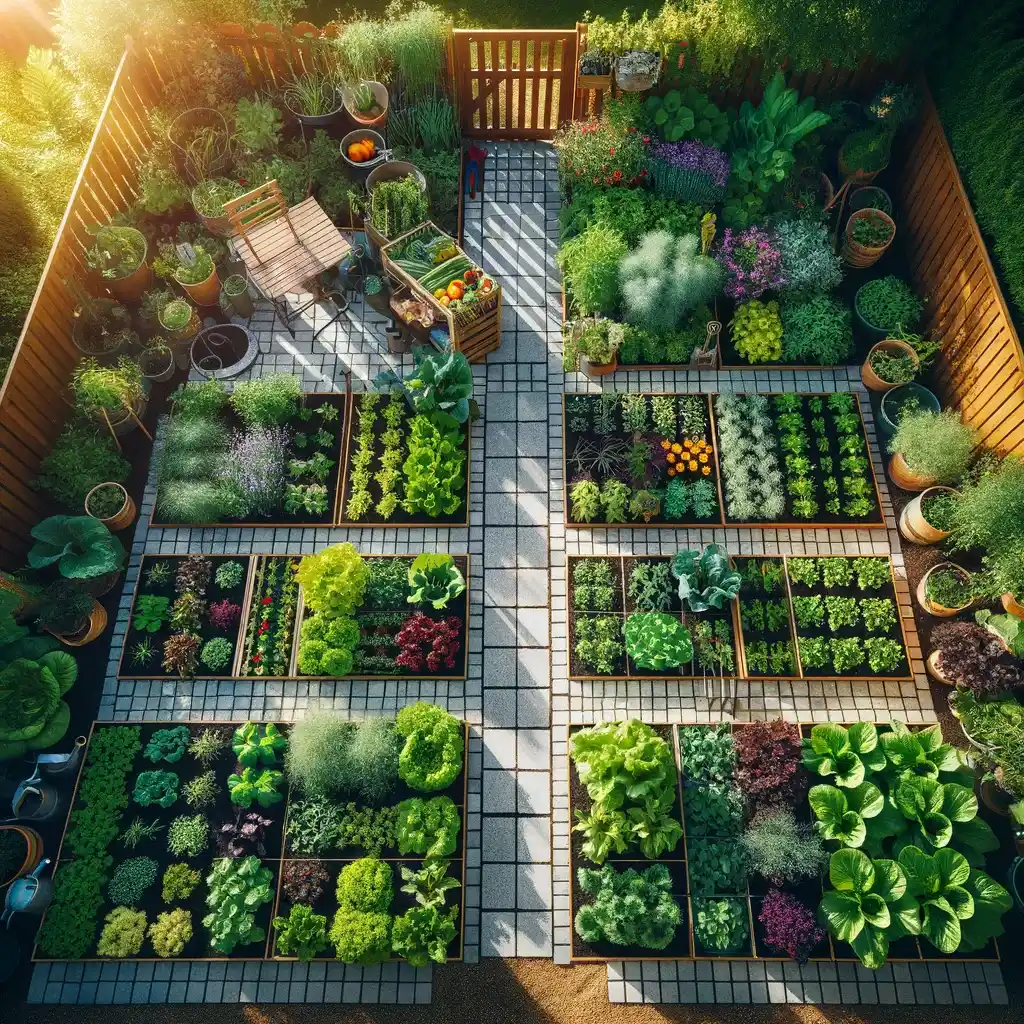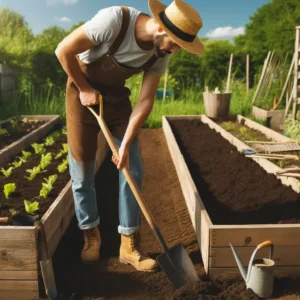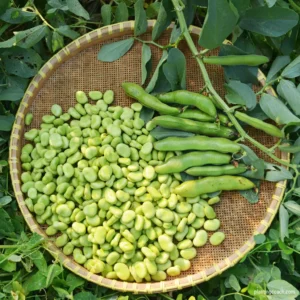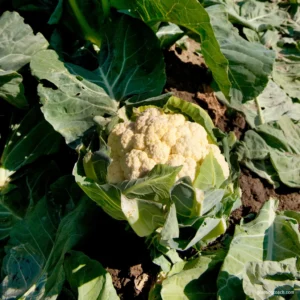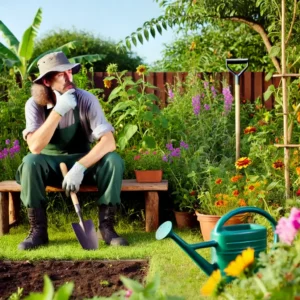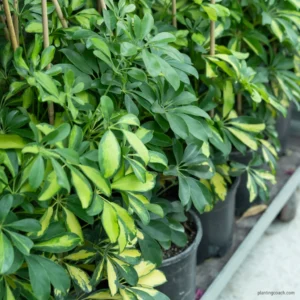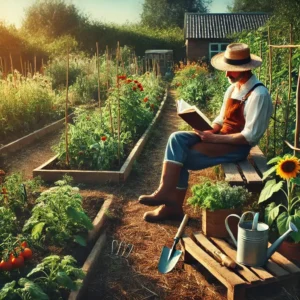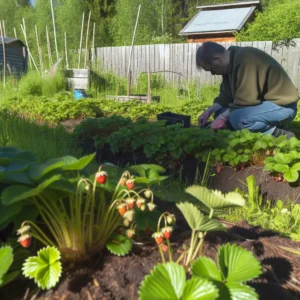Smart gardening is more than just a method; it’s an approach that utilizes advanced techniques and modern technology to improve the efficiency, yield, and sustainability of garden spaces. Understanding how to select the optimal site for your garden is a foundational skill that can dramatically affect your gardening success. Choosing the right location involves more than just finding a spare patch of land; it requires careful consideration of environmental factors and planned management of resources.
By selecting a smart site, gardeners can maximize their garden’s potential and ensure a bountiful harvest. This article will guide you through several crucial factors to smart gardening, including How to Choose a Smart Site for your garden, from sunlight and soil quality to technological aids that can make the process easier and more precise.
How to Choose a Smart Site for Your Garden
Understanding the Basics of Smart Gardening
Smart gardening is the application of information and technology to plant cultivation. This approach can involve using sensors to monitor soil moisture levels, employing automated irrigation systems that deliver the right amount of water at the right time, or utilizing apps that provide tailored gardening advice based on specific climate and soil conditions. The benefits of incorporating smart gardening techniques are numerous, such as Increased efficiency, enhanced plant health, resource conservation, and data insights. Several technologies are vital in smart gardening, such as sensors and IoT devices, automated systems, mobile apps, and software.
Factors to Consider When Choosing a Garden Site
Selecting the right site for your garden is essential for ensuring optimal growth and yield. Several key factors must be considered to make an informed decision, including sunlight, soil quality, and water access. Each plays a vital role in the health and productivity of your plants.
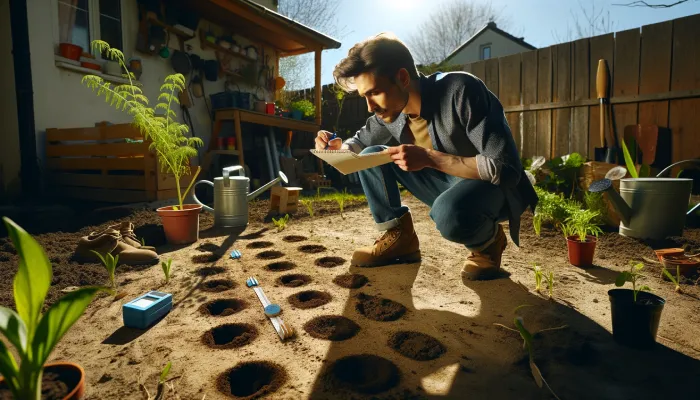
- Sunlight Exposure: Sunlight is arguably the most critical factor for plant growth. Most plants require at least six to eight hours of direct sunlight per day to thrive. To assess the sunlight exposure of a potential garden site, track how many hours of direct sunlight the area receives daily. Sunlight calculators or apps can help determine the best placement for your garden based on light patterns.
- Soil Quality: Soil health is the primary factor for successful gardening. Before establishing your garden, check for pH levels, nutrient content, and the presence of contaminants if you’re in an urban area. Depending on the soil type, you may need to add organic matter to improve drainage and aeration or adjust pH levels to suit specific plant needs. Incorporate compost, manure, or other organic materials annually to maintain fertility and support robust plant growth.
- Water Access and Drainage: Adequate water is essential, but too much can be just as detrimental as too little. When evaluating your garden site, ensure there is easy access to water for regular watering. If not, consider how you will transport water to your garden. Look at the landscape to determine how water flows and collects. Avoid waterlogged areas or where water stands after rain, as poor drainage can lead to root diseases. Depending on the scale and layout, consider setting up irrigation systems like drip lines or soaker hoses to manage water usage efficiently.
Analyzing Your Space: Practical Tips
Even with limited space, you can create a highly productive garden by using thoughtful planning and design techniques. Here are some practical tips to help you analyze and maximize the potential of your garden site:

- Efficient Use of Space: Utilize vertical space by growing climbers like beans, peas, and some types of squash on trellises, fences, or nets. This can dramatically increase your growing area without expanding the footprint of your garden. Implement raised beds to improve drainage and reduce soil compaction, improving root health and ease of access. Containers can be used for portability and space management, especially in urban settings. Maximize space and improve plant health by growing compatible plants together. This technique can help in pest control, pollination, and even soil improvement.
- Tools for Garden Analysis: Before starting, test your soil to understand its nutrient and pH levels. This will help you decide what amendments might be needed or which plants will thrive. Use a light meter to determine which areas of your garden receive the most sunlight and tailor your plant selection and placement accordingly. Use technology with garden planning apps or software to map out and visualize garden layouts before planting. These tools can also track sun exposure, watering schedules, and plant growth.
- Observing and Learning from Your Environment: Be aware of the local wildlife that frequents your garden area. Certain animals can be beneficial, while others might require deterrent strategies. Observe and engage with neighboring gardens. This can provide valuable insights into what plants are successful in your area and what challenges you might face. Sometimes, the best way to learn is through experimentation. Try different layouts or plants to see what works best for your specific conditions.
The Role of Climate in Garden Site Selection
Climate plays a decisive role in gardening. Understanding your local climate conditions is crucial for choosing the right plants and designing a fruitful garden. Here’s how you can incorporate climate considerations into your garden planning:

- Understanding Your Climate Zone: First, identify your climate zone. This classification helps you understand which plants will most likely succeed in your area. For example, what grows well in the cool, moist Pacific Northwest might struggle in the hot, dry Southwest. Pay attention to the length of your growing season—the period between the last frost in spring and the first frost in autumn. This will guide you in choosing plant varieties that can mature within your local season constraints.
- Adapting Garden Plans to Seasonal Patterns: Be aware of your area’s weather trends, such as average rainfall, temperature extremes, and prevalent weather events (like droughts or heavy rains). Use this information to plan water management strategies and choose plants that can withstand local conditions. Use cold frames, greenhouses, or row covers to extend your growing season. These tools can protect your plants from unexpected frosts or overly chilly temperatures and can allow you to start your season earlier or end it later.
- Mitigating Climate Risks: If you live in a drier climate, opt for drought-resistant plant varieties or those that require less water. Provide physical barriers such as windbreaks or shade cloths to protect plants from excessive wind or sun, which can be particularly harsh in certain climates. Consider adaptive planting strategies like succession planting, which involves planting seeds at intervals to extend the harvest period and mitigate risks associated with weather fluctuations.
Technological Aids for Site Selection
In today’s gardening world, technology plays a crucial role in helping gardeners make informed decisions about where to plant their gardens. From sophisticated apps to advanced sensor technology, here’s how you can use these tools to choose the best garden site:
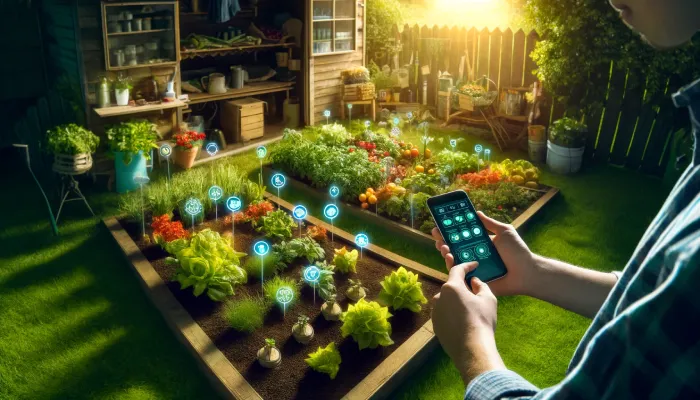
- Apps and Online Tools: There are several apps available that help you design your garden layout, taking into account factors like sun exposure, soil type, and plant requirements. These apps often include features that allow you to visualize your garden in various stages of growth. These apps help determine the optimal positions for planting based on how sunlight travels over your property throughout the day. They can be invaluable in ensuring your plants get the required amount of sunlight. Some apps integrate with soil sensors to provide real-time data on soil conditions, including moisture levels, pH, and nutrient content.
- Sensors and IoT Devices: Install sensors in your garden to continuously monitor soil moisture, pH levels, and nutrient content. These sensors can send alerts to your smartphone or computer, helping you maintain optimal soil conditions for your plants.
- Combining Data for Better Decisions: By combining data from multiple sources, such as weather stations, soil sensors, and sun trackers, you can get a comprehensive view of your garden’s environmental conditions. This integration can help you optimize plant health and yield.
Designing Your Garden Layout
Designing your garden layout involves more than just aesthetics; it’s about creating an environment where plants can thrive while efficiently using space. Here are some key principles and steps to consider when planning the layout of your garden:

- Principles of Effective Garden Design: Position your garden beds to maximize sun exposure, especially for sun-loving plants. North-south oriented beds usually receive the most even sunlight throughout the day. Ensure there is easy access to all parts of the garden for maintenance and harvesting. Pathways should be wide enough to walk through comfortably and, if necessary, accommodate a wheelbarrow. Plan for crop rotation to prevent soil depletion and reduce the risk of pest and disease buildup. Integrate a variety of plants to promote biodiversity, which can aid in pest management and soil health.
- Creating a Planting Calendar: Align your planting calendar with the local climate and seasons. Start seeds indoors if needed to extend the growing season and plan for successive planting to ensure a continuous harvest. Understand the growth cycles of your chosen plants.
- Utilizing Modern Tools for Layout Design: Use software or online tools to sketch out your garden layout. These tools often include drag-and-drop functionality for different garden elements, making it easy to visualize and tweak your design. Utilize apps that help monitor plant health, provide reminders for care, and track growth progress.
- Practical Layout Examples: These can be arranged to optimize space and improve soil drainage. They also make it easier to manage soil quality and are ideal for back-friendly gardening. Container gardening is perfect for limited spaces or urban environments. Containers can be moved to optimize sun exposure and can be used to grow a wide range of vegetables.
Common Mistakes in Garden Site Selection and How to Avoid Them
Choosing the right site for your garden is crucial, but it’s easy to overlook certain aspects that can lead to less-than-optimal results. Here’s a look at some common mistakes gardeners make when selecting a site and practical advice on how to avoid them:

- Ignoring Sunlight Requirements: One of the most common mistakes is not considering how much sunlight different areas of your garden actually receive. Before deciding on a site, monitor the sunlight exposure throughout the day and across different seasons. Choose a location that meets the sunlight needs of the plants you want to grow.
- Overlooking Soil Health: Another common mistake is assuming all soil is the same and failing to test soil conditions. Conduct soil tests for pH, nutrient levels, and texture. Amend the soil based on test results to create the optimal growing environment for your chosen crops.
- Inadequate Water Access: Choosing a site without considering proximity to a water source can lead to inconvenient watering routines. Ensure your garden is easily accessible to a water source. Consider installing an irrigation system to reduce labor and provide consistent moisture to your plants.
- Poor Drainage: Selecting a site with poor drainage can lead to waterlogged soil and root diseases. Check how water behaves in potential garden spots after a rain. If drainage is poor, consider raised beds and amend the soil to improve its structure and drainage capabilities.
- Not Accounting for Wildlife: Failing to consider the impact of local wildlife on your garden. Observe the area for signs of animal activity. Use fencing, netting, or other deterrents to protect your garden from being raided by animals.
- Planting Too Close to Trees and Shrubs: Planting too close to existing trees and shrubs can lead to competition for nutrients, water, and light. Allow sufficient space between your garden and any large plants or trees to ensure they do not interfere with each other’s growth.
- Ignoring Future Growth: Not planning for how the garden will expand or change in the future. When planning your garden layout, leave room for expansion or alterations based on your long-term gardening goals.
Summary
Choosing the right site for your garden is a foundational step toward successful gardening. By considering factors such as sunlight exposure, soil quality, water access, and climate, gardeners can significantly increase the chances of their plants thriving. Incorporating modern technology like garden planning apps, sensors, and automated systems can further refine the site selection process and optimize garden management. This guide has provided practical advice, from efficient space utilization to avoiding common mistakes to helping you establish a productive and sustainable garden. Remember, each garden is unique, and adapting the principles discussed to your specific conditions will yield the best results.
FAQ
Q1: What is the minimum amount of sunlight needed for a garden?
A1: Most plants need at least six to eight hours of direct sunlight per day. However, some crops like lettuce and spinach can tolerate more shade.
Q2: How can I improve poor soil in my chosen garden site?
A2: Start by testing the soil to determine its specific deficiencies. Typically, adding organic matter such as compost, manure, or leaf mold can improve soil structure, improve nutrient content, and increase microbial activity.
Q3: Are there any cost-effective technological tools for beginners in smart gardening?
A3: Yes, basic soil moisture sensors, inexpensive weather stations, and various free or low-cost gardening apps can provide significant assistance without a large upfront investment.
Q4: What are the best vegetables to grow in a cool climate?
A4: Cool-climate vegetables include root crops like carrots and beets, leafy greens such as kale and Swiss chard, and cruciferous vegetables like broccoli and cauliflower.
Q5: How do I modify my garden plan if my first choice site fails?
A5: Assess why the site didn’t meet your expectations, whether due to sunlight, soil, or moisture issues, and adjust accordingly. You might need to alter what you plant, amend the soil, improve drainage, or even relocate certain plants to better-suited areas of your garden.
